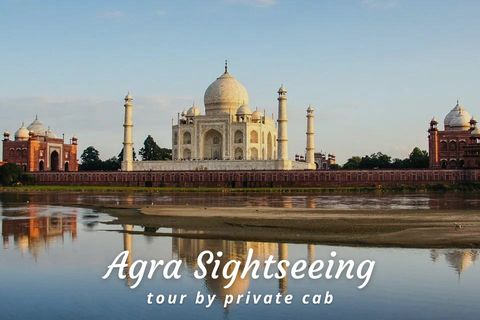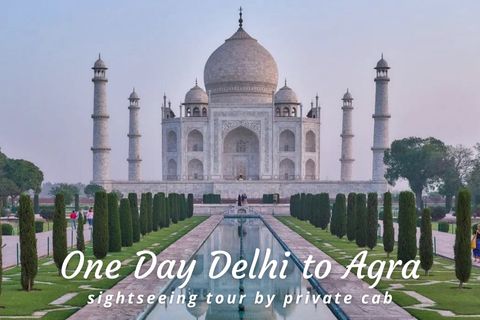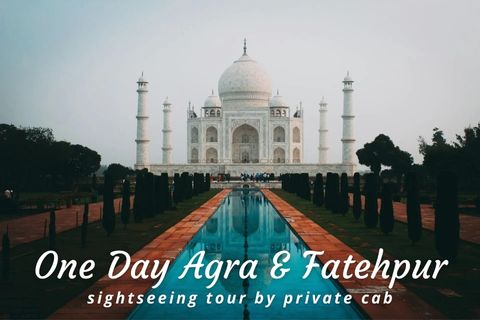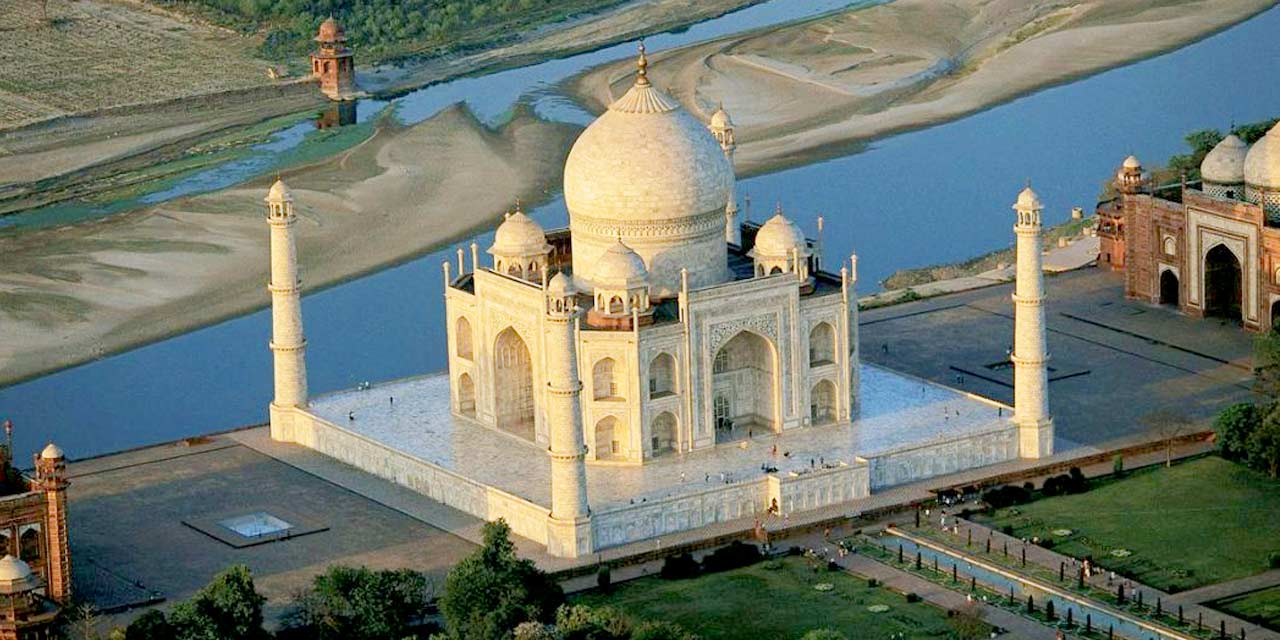Taj Mahal Agra Entry Fee
- 50 per person for Indians
- 540 per person for SAARC and BIMSTEC citizens
- 1100 per person for Foreign tourist
Taj Mahal Agra Phone
0562 222 6431
0562 242 1204
Rating:  | 4/5 stars
| 4/5 stars
Based on total 29 reviews
Taj Mahal Agra Address: Dharmapuri, Forest Colony, Tajgan, Agra, Uttar Pradesh, 282001, India
Agra Tour Packages
Agra Tour PackagesTaj Mahal Agra Timings
| Day | Timing |
|---|---|
| Monday | 5:00 am – 6:30 pm |
| Tuesday | 5:00 am – 6:30 pm |
| Wednesday | 5:00 am – 6:30 pm |
| Thursday | 5:00 am – 6:30 pm |
| Friday | Closed / Holiday |
| Saturday | 5:00 am – 6:30 pm |
| Sunday | 5:00 am – 6:30 pm |
Note: Taj Mahal Agra is opens 1 hour before sunrise and closes 45 Minutes before sunset during normal operating days (Taj Mahal is closed on Fridays for general viewing)
Links: Website | MapTaj Mahal Agra Entry Tickets Prices
| Tourist Type | Amount (Rs.) (Inclusive of ASI & ADA fees) |
|---|---|
| Domestic/Indian | 50/- + 200/- Additional for visiting main mausoleum (Optional) |
| Citizens of SAARC and BIMSTEC Countries | 540/- + 200/- Additional for visiting main mausoleum (Optional) |
| Foreign tourist | 1100/- + 200/- Additional for visiting main mausoleum (Optional) |
| Entry Below (Children Below Age 15) | Free |
The Taj Mahal of Agra is an enchanting marvel built by Emperor Shah Jahan. It’s a masterpiece of architectural beauty and a symbol of eternal love. And its romanticism continues to attract tourists from all around the world.
Constructed entirely out of white marble, the Taj is one of the most beautiful monuments in the world. It’s the centrepiece of a complex, which includes a mosque and an assembly hall.
Taj Mahal Agra is the mausoleum for Mumtaz Mahal, Shah Jahan’s beloved wife, who died during childbirth. The grave of Shah Jahan, too, is inside. And the breathtaking beauty, intricate design and impeccable craftsmanship of the monument makes it the top tourist place in Agra.
With each passing hour, the hue of the monument changes. Many visitors arrive early in the morning to witness its beauty at sunrise. Others choose to visit it during sunset to see it bathed in a warm glow.
Whether you’re a history enthusiast or a lover of art and architecture, the Taj Mahal will leave you spellbound. It isn’t just a visual experience but also a mesmerizing sojourn.
The gardens and water channels around make it even more spectacular. Hire a guide and immerse yourself in the stories. Plan well in advance to make the most of your visit. It takes you on a journey through time and culture.
Where is the Taj Mahal in Agra?
The Taj Mahal is a white marble tomb on the south bank of River Yamuna. It’s a UNESCO World Heritage Site that stands as a testament to India’s rich cultural heritage. It’s considered one of the finest examples of Mughal architecture. And it truly reflects the grandeur of the era.
Image Gallery of Taj Mahal Agra
History of Taj Mahal Agra
Shah Jahan ordered the building of the Taj Mahal when Mumtaz Mahal died in 1631. Her death had left the emperor completely heartbroken.
He adored this land on the south side of Agra. It belonged to Raja Jai Singh I, who agreed to gift it. Thus, the foundation of the Taj Mahal was laid.
Taj Mahal’s construction began in 1632, and the main building was completed by 1648. The entire complex was completed in 1653.
However, Shah Jahan couldn’t relish its beauty for long. He was soon overthrown by his son Aurangzeb and kept in Agra Fort. And for the rest of his life, Shah Jahan could only gaze at his creation through a window in the fort.
In 1983, the Agra Taj Mahal was designated as a UNESCO World Heritage Site.
Thousands of people from all over India and Central Asia worked on this monument. Artisans were also brought from Europe to design the marble panels and work with precious stones.
Architecture of Taj Mahal
Taj Mahal incorporates the architectural traditions of Indo-Islamic and Mughal styles, with some differences. While most Mughal buildings were constructed primarily of red sandstone, the Taj Mahal exterior used white marble and semi-precious stones. The architects and garden planners gave it a remarkable uniqueness.
Taj Mahal has four faces, all in perfect symmetry. They feature impressive vaulted arches inscribed with shiny stones and quotations from the Quran.
The tomb is at one end of a lavish garden instead of the centre, giving it a distant, heavenly view. It’s raised on a square platform with tall minarets at the corners. These minarets have octagonal bases that extend beyond the edge at the corners.
While the tomb’s exterior is square in plan, the double-storied domed chamber is octagonal. It houses the cenotaphs of Mumtaz Mahal and Shah Jahan, encircled by exquisite marble lattice screens. And the borders are inlaid with precious stones representing flowers.
The upper cenotaphs are only illusory. The actual graves are in the lower tomb chamber.
The mosque and Mehman Khana (assembly hall) on either side of the tomb are built of red sandstone. They’re in stark contrast to the white tomb. Both are identical in their structures and have a large platform over the terrace at their front.
Another impressive structure in the Taj Mahal complex is the main gate. It has galleries facing the Taj Mahal, after which the gardens and walkways begin.
Things to do in Taj Mahal Agra
1. Admiring Taj Mahal’s grandeur – The main points of the Taj Mahal complex for tourists are the mausoleum building and its garden. The mausoleum is an architectural marvel of white marble adorned with intricate carvings and delicate inlays.
It’s the focus of the vast, oblong complex; at one end of which the building is set. The contrasting colour of the green gardens and reddish pathways enhances its allure. Take your time to appreciate its grandeur.
2. Visiting the mausoleum chamber – Taj Mahal houses the tombs of Mumtaz and Shah Jahan. Although the large domed chamber has a false representation of the graves, it’s still the core of the building.
Artistry on walls and floor, designs with precious stones, and lattice screens, all show how much work has been put into making it an eternal home for Mumtaz. The actual graves are in a lower chamber, the entry to which is restricted.
3. Relaxing in the gardens – Taj Mahal is surrounded by a beautiful garden, beginning from the entrance and spreading across to the base of the mausoleum. It’s lined with lush trees and colourful flower beds, adding charm to this monument of love.
This quaint setting makes for a beautiful backdrop for some memorable photos. You can take a stroll and enjoy the serene atmosphere. Another highlight of the garden is the water channel studded with fountain points that runs across its length in the middle.
4. Visiting the Mosque and the Jawab – You’ll find two identical structures on both sides of the Taj. One is a mosque, and another is Mehman Khana (assembly hall) referred to as Jawab (meaning response, in Urdu).
The assembly hall is built as a mirror image of the mosque to maintain the symmetry of the complex. Both these buildings are made with red sandstone. You can visit them to get a closer look at their architectural beauty.
5. Exploring the Taj Museum collection – A small museum is located within the Taj complex. It houses a collection of artifacts and exhibits related to the Taj Mahal as well as many original miniature paintings from the Mughal era.
A pair of ivory portraits of Shah Jahan and Mumtaz Mahal from the 17th century is the primary attraction. It also provides insights into the Taj Mahal’s significance.
6. Marvelling at the entrance gate – Another point of interest in the complex is the gigantic entrance gate. It’s referred to as darwaza-e-rauza (gate of the mausoleum), and it’s worthy of all the attention it gets.
This monumental piece of architecture stands on a raised platform that leads you to the garden. And it provides a formal glimpse of the grandeur of Taj Mahal that awaits you inside. It also acts as a viewing gallery to admire the beauty of Agra’s Taj Mahal at the other end of the garden.
7. Watching the sunset from the entrance – Taj Mahal looks exceptionally beautiful during sunset. As the sun descends, the marble facade undergoes a mesmerizing transformation. It’s a breathtaking experience that adds a touch of magic and romance to the Taj.
The mausoleum reflects the warm hues of the sun, transitioning from a bright white building to a golden one. To witness the changing colours, visit the place during these hours and immerse yourself in its peaceful and serene surroundings.
8. Checking other structures in the complex – Apart from the Taj Mahal tomb and the gate, you have a few more places to explore. The Taj complex has three entry gates from the main street that architecture lovers will love to explore.
These gates are East Gate (Fatehabadi Darwaza), West Gate (Fatehpuri Darwaza) and South Gate (Sidhi Darwaza). These lead to Jilaukhana (or the front courtyard). Although their design is simple compared to the Taj Mahal’s entrance, they’re elegant.
9. Clicking photographs – Taj Mahal is a fantastic place for photography enthusiasts. Its stunning architecture, intricate details and picturesque gardens offer endless opportunities for capturing beautiful images.
This iconic beauty changes colour throughout the day, thanks to changing lighting conditions. Each hour offers a unique mood to capture. Other elements like the surrounding garden and the water channel in the front also allow you to frame visually striking compositions.
10. Admiring the night view of Taj Mahal – Taj Mahal night view is open five days a month, around the full moon, when it’s bathed in the moon’s soft light. This pristine white structure glowing against the dark sky creates a magical ambience. Although you’re allowed to see the building only from a distance, this moonlit view is highly sought after.
11. Shopping on the streets – Apart from enjoying different views of the Taj Mahal, you can also explore the streets around and shop for souvenirs. These streets are dotted with shops offering a wide range of local art and handicraft items.
Miniature Taj Mahal replicas are the most popular here. Then, hand-embroidered pieces in vibrant colours are a feast for the eyes. You’ll also find traditional jewellery, leather shoes and textiles.
12. Exploring other tourist places nearby – When you’re done exploring the unique features of the Taj, find your way around the city to visit other important places in Agra. The most popular of them is Agra Fort. Visiting this heritage tourist attraction will let you into the history of the Mughal empire.
Fatehpur Sikri is another must-visit. It was founded by emperor Akbar and it acted as the capital for a short time. Other tourist places worth visiting are Akbar’s tomb at Sikandra, Itmad-ud-Daulah’s tomb and Mehtab Bagh.
Taj Mahal Timings and Entry Fees
The Taj Mahal is open throughout the year, on all days of the week. On Fridays, though, entry is allowed only to practising Muslims who come to attend the afternoon prayers.
The opening time of Taj Mahal is 1 hour before sunrise and the closing time is 45 minutes after sunset. The museum inside is open from 10 AM to 5 PM.
The entry fee of Taj Mahal is ₹50 per person for Indian citizens and ₹540 for SAARC and BIMSTEC citizens. Other foreign visitors need to pay ₹1100 each. And if you wish to enter the mausoleum, an additional ₹200 per person is charged. The audio guide is also charged extra.
Entry is free for all children below 15 years.
Taj Mahal Night View Timings and Fees
Taj Mahal night views are allowed five nights a month: on the full moon and two nights before and after the full moon. But it’s not organised on Fridays and during the month of Ramzan.
Night view timings of the Taj Mahal are from 8 PM to 11:59 PM, and it’s carried out in eight batches of about 30 minutes each. You can watch it from a distance, from the Shilpgram centre in the complex. Only around 50 people are allowed in each batch.
Taj Mahal tickets for night views are ₹510 per person for Indians and ₹750 for foreigners. For kids between 3 and 15 years of age, the ticket costs Rs 500. Other kids (below 3 years of age) are allowed free entry.
Best time to visit Taj Mahal Agra
You can visit the Taj Mahal and explore it best during winter (from November to February). The weather in Agra is the most comfortable on those days. Visit it during the evening hours for the best experience. Morning hours are also suitable if you want to enjoy your visit with fewer people around.
For night views, however, visiting the Taj Mahal in summer is best. You’ll have a better chance to get a clear night and a moonlit Taj. Prepare for your trip accordingly.
Time to explore Taj Mahal Agra
The complex is spread across a large area. It includes the mausoleum, museum and mosque, among other structures. So, you should have about 2-3 hours to explore the complex properly. Night viewing is capped at 30 minutes for each batch of tourists.
Things to keep in mind when visiting Taj Mahal
- Taj Mahal ticket counters open about an hour before sunrise.
- Separate lines for men and women are present at entry gates.
- Wear shoe covers available from the counter.
- Battery buses and golf carts are available from parking to the Taj Mahal.
- Foreigners’ tickets include bus/golf cart service to the entrance gate.
- Luggage can be stored for free beside the ticket offices.
- Photography is prohibited inside the mausoleum chamber.
- Drones are prohibited in and around the Taj Mahal complex.
- Tripods also aren’t allowed anywhere in the complex.
- Smoking and drinking are strictly prohibited.
- Eating and littering are also restricted.
- Mobile phones must be kept silent, switched off, or in flight mode.
- Night viewing schedule is decided by the Archaeological Survey of India (ASI).
- Night view tickets must be bought a day before from the ASI office.
- During night viewing of the Taj Mahal, mobile phones aren’t allowed.
How to reach Taj Mahal in Agra?
The Taj Mahal is on the south bank of River Yamuna. It’s about 6 km away from Agra Idgah bus stand and Agra Cantt railway station. From Agra airport, it’s 9 km away. The nearest international airport to Taj Mahal Agra is in Delhi (about 230 km away).
By bus – Buses are available from many parts of Agra. Purani Mandi Chauraha is the nearest bus stop to Taj Mahal, only a few hundred metres away. You can take an auto-rickshaw or e-rickshaw from there.
By auto/e-rickshaw – Auto rickshaws, cycle rickshaws and e-rickshaws are available in all parts of Agra. They’re a convenient means of transport to travel in Agra.
By cab/taxi – Hiring a cab or taxi is the best way to visit the Taj Mahal and other tourist places nearby. You can book one from the top car rental companies in Agra easily. Cabs drop you near the entry gate, from where you can walk to the Taj or take a battery bus or golf cart.
FAQs about Taj Mahal Agra
Explore the best of Agra by booking a Agra Tour Packages with us. With Agra Tourism, a division of Holidays DNA, you can have the best time of your life with your family and friends. Please fill the Contact Us form to get in touch with us.





